Carnivorous Plants to Decorate Your Home
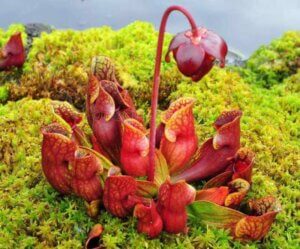
There are many diverse and colorful plants that you can use to decorate your home. However, if you’re looking for interesting and attractive plants that really stand out, then maybe it’s time to consider using carnivorous plants in your decoration.
Why not be more daring in your interior design? You can be brave not just in your choice of color or original, unique decorations, but also by using components that are new and unusual.
While you might normally use more safe, traditional decorations, remember that there are many other options that you might not have considered. In fact, these may open up new doors for you in the world of interior decor.
The beauty and benefits of carnivorous plants
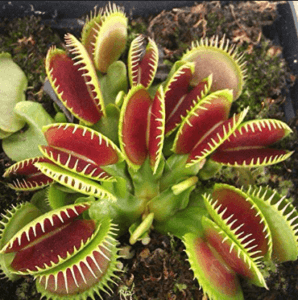
In terms of the many benefits of using carnivorous plants in your interior decor, it’s almost impossible to overlook their eye-catching and unique appearance. These striking, extraordinary plants break completely from the traditional look of a house plant.
Carnivorous plants grab attention and arouse curiosity almost immediately. They fall into the “exotic” category. While they are relatively unknown, they are quite remarkable and are in a completely different league to the standard house plant.
Their colors and shape are very different to those of normal plants, so using these exotics in your decoration can help you move away from tradition and create a more innovative interior decor. Having said that, it’s equally important for you to feel comfortable with decorating your home with these plants.
The best way to achieve originality in your home is to use elements that aren’t widely known and are unique, and arouse curiosity.
5 tips for using carnivorous plants in your decoration
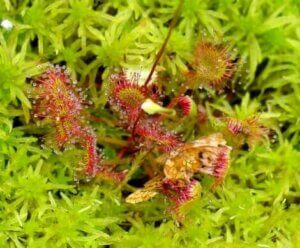
Do you know which plants best adapt to living indoors and can therefore last longer? It’s important to carefully select the plants you use in your decoration, so here are a couple of different types to choose from:
- Dionaea muscipula: otherwise known as the “Venus flytrap”, this is probably the most common plant in this category. The plant comprises a central rosette, from which several bulb-shaped stems grow with flat leaves. These leaves grow “teeth” to catch their prey.
- Drosera rotundifolia: also known as the common sundew, the leaves of this plant are arranged in a rosette. It has long, hairy petioles whose tips secrete a sticky mucilage to capture prey. Its reddish-green color combination makes this a very striking plant.
- Nepenthes alata: this tropical plant is much bigger that the first two. Its leaves are red in color and shaped like a pitcher. This plant also has small, hidden yellow-green flowers, and the pitcher contains nectar to attract insects.
- Sarracenia purpurea: the “purple pitcher plant” is common to North America. It’s also known for its leaves that have a pitcher shape and increase in thickness and size as the plant grows. This is also a very attractive plant with green and red tones.
- Pinguicula afrodita: this carnivorous plant is quite different to the others. It has long, broad leaves, but its most fascinating feature is its violet flowers that bloom seasonally. With time, the flowers become rose in color.
Where to place your plants
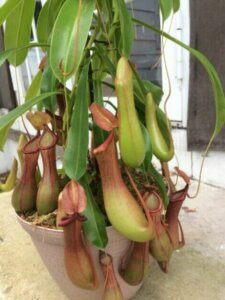
It’s important to not choose your carnivorous plants at random. Each plant needs specific conditions to grow well, and they need a lot of care and attention.
Obviously, these plants need light like any other plant, and so it’s important not to put them in dark places. Carnivorous plants don’t necessarily need constant direct sunlight, but they should get some light for a couple of hours a day. It’s best to place them close to a window.
Carnivorous plants also need to be in a humid, warm to mild environment to grow well. This means that they don’t grow well in stiflingly hot rooms or rooms where there are cold draughts. One of the most important things to remember is not to place them next to or near a radiator.
How to decorate your home with plants
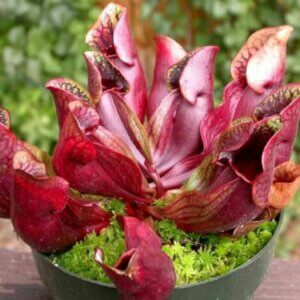
Now you know the essentials about carnivorous plants, it’s worth mentioning that these plants can make any furniture near them stand out, creating a completely unique, unusual look. For example, they can easily highlight a dining table or even a shelf above your staircase.
In any case, remember that you can attract attention to your carnivorous plants by placing them on a platform that will bring them into the limelight and transform them into more than just a decoration.
There are many diverse and colorful plants that you can use to decorate your home. However, if you’re looking for interesting and attractive plants that really stand out, then maybe it’s time to consider using carnivorous plants in your decoration.
Why not be more daring in your interior design? You can be brave not just in your choice of color or original, unique decorations, but also by using components that are new and unusual.
While you might normally use more safe, traditional decorations, remember that there are many other options that you might not have considered. In fact, these may open up new doors for you in the world of interior decor.
The beauty and benefits of carnivorous plants

In terms of the many benefits of using carnivorous plants in your interior decor, it’s almost impossible to overlook their eye-catching and unique appearance. These striking, extraordinary plants break completely from the traditional look of a house plant.
Carnivorous plants grab attention and arouse curiosity almost immediately. They fall into the “exotic” category. While they are relatively unknown, they are quite remarkable and are in a completely different league to the standard house plant.
Their colors and shape are very different to those of normal plants, so using these exotics in your decoration can help you move away from tradition and create a more innovative interior decor. Having said that, it’s equally important for you to feel comfortable with decorating your home with these plants.
The best way to achieve originality in your home is to use elements that aren’t widely known and are unique, and arouse curiosity.
5 tips for using carnivorous plants in your decoration

Do you know which plants best adapt to living indoors and can therefore last longer? It’s important to carefully select the plants you use in your decoration, so here are a couple of different types to choose from:
- Dionaea muscipula: otherwise known as the “Venus flytrap”, this is probably the most common plant in this category. The plant comprises a central rosette, from which several bulb-shaped stems grow with flat leaves. These leaves grow “teeth” to catch their prey.
- Drosera rotundifolia: also known as the common sundew, the leaves of this plant are arranged in a rosette. It has long, hairy petioles whose tips secrete a sticky mucilage to capture prey. Its reddish-green color combination makes this a very striking plant.
- Nepenthes alata: this tropical plant is much bigger that the first two. Its leaves are red in color and shaped like a pitcher. This plant also has small, hidden yellow-green flowers, and the pitcher contains nectar to attract insects.
- Sarracenia purpurea: the “purple pitcher plant” is common to North America. It’s also known for its leaves that have a pitcher shape and increase in thickness and size as the plant grows. This is also a very attractive plant with green and red tones.
- Pinguicula afrodita: this carnivorous plant is quite different to the others. It has long, broad leaves, but its most fascinating feature is its violet flowers that bloom seasonally. With time, the flowers become rose in color.
Where to place your plants

It’s important to not choose your carnivorous plants at random. Each plant needs specific conditions to grow well, and they need a lot of care and attention.
Obviously, these plants need light like any other plant, and so it’s important not to put them in dark places. Carnivorous plants don’t necessarily need constant direct sunlight, but they should get some light for a couple of hours a day. It’s best to place them close to a window.
Carnivorous plants also need to be in a humid, warm to mild environment to grow well. This means that they don’t grow well in stiflingly hot rooms or rooms where there are cold draughts. One of the most important things to remember is not to place them next to or near a radiator.
How to decorate your home with plants

Now you know the essentials about carnivorous plants, it’s worth mentioning that these plants can make any furniture near them stand out, creating a completely unique, unusual look. For example, they can easily highlight a dining table or even a shelf above your staircase.
In any case, remember that you can attract attention to your carnivorous plants by placing them on a platform that will bring them into the limelight and transform them into more than just a decoration.
All cited sources were thoroughly reviewed by our team to ensure their quality, reliability, currency, and validity. The bibliography of this article was considered reliable and of academic or scientific accuracy.
- Bärtels, Andreas: Plantas tropicales: ornamentales y útiles, Omega, 2005.
- Güther, Heide: Plantas de interior: rápido y fácil, Hispano Europea, 2003.







